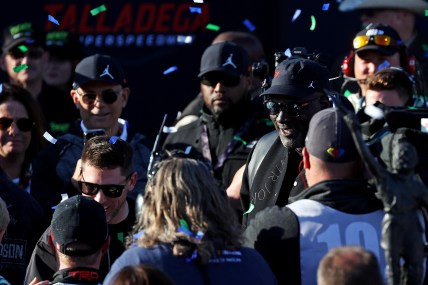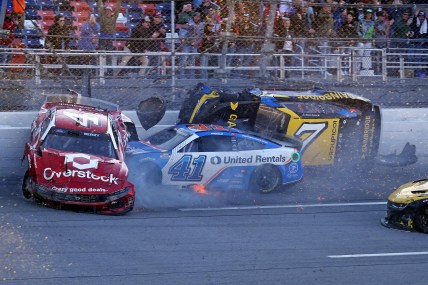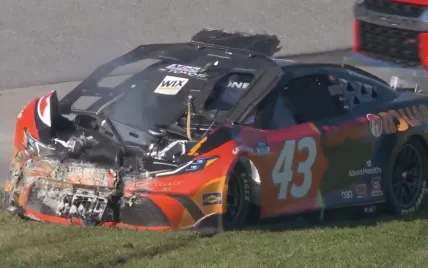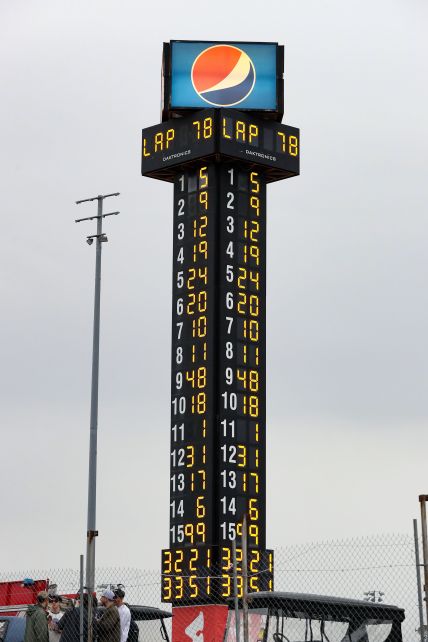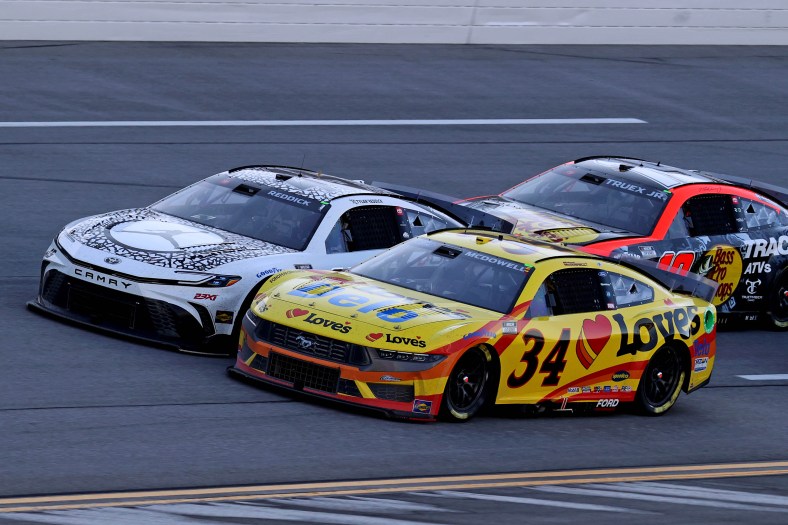
The World-Famous Shoe Guy finally made it to Victory Lane in person as a NASCAR Cup Series team owner.
You know, Michael Jordan!
At four years old, that’s all Beau Reddick knows Air Jordan from over the past two years beyond being Daddy’s Boss. He legitimately has no idea who gleefully picked him up as part of a victory celebration at Talladega Superspeedway on Sunday.
“As young as he is, I feel like he knows him as the guy with the shoes for sure, the shoe company, right,” said Tyler Reddick after winning the GEICO 500. “I haven’t done a great job letting him know and this gives me an idea to maybe play some old-school video games with him so he can get an idea of how dominant he was in him prime.”
But really, it’s fair to wonder if Reddick and wife Alexa DeLeon truly recognize how surreal it is that their combined life choices have led to the Michael Jordan hoisting their son in the air like he is the Larry O’Brien Championship Trophy.
It was just over a decade ago that Reddick was a young Dirt Late Model racer and DeLeon was an aspiring social worker. There was the Brad Keselowski Racing phase before stints at JR Motorsports and then Richard Childress Racing.
Life is an interesting journey in how it led Reddick to 23XI and getting Jordan his sixth win as a team owner but his first in person.
Like, Jordan is legitimately a hands-on owner, in how much input he has into the team and its Air Speed facility in Huntersville, North Carolina. He attends numerous races each season but the timing just hasn’t worked out until now that they could enjoy a real-time celebration like this together.
“For him he’s come to a few races, and unfortunately, even as good as the days have looked, they’ve not ended in Victory Lane,” Reddick said. “So, for us to win a race like that, be up front as much as we were at the end and it looked like it was slipping away, and then we get it back, man, it’s an unreal feeling.
“It’s great. I’m really excited that I was able to do it, but my excitement level would not change whether it was me or Bubba (Wallace) that got him here when he was at the track.
“He means a lot to everyone here at 23XI. He makes a big effort to talk to me, talk to Bubba, talk to Denny, talk to Steve (Luletta), talk to other individuals on the team and pump us up when we need it. To have him here to experience victory lane for the first time is really special.”
Seasons on the line
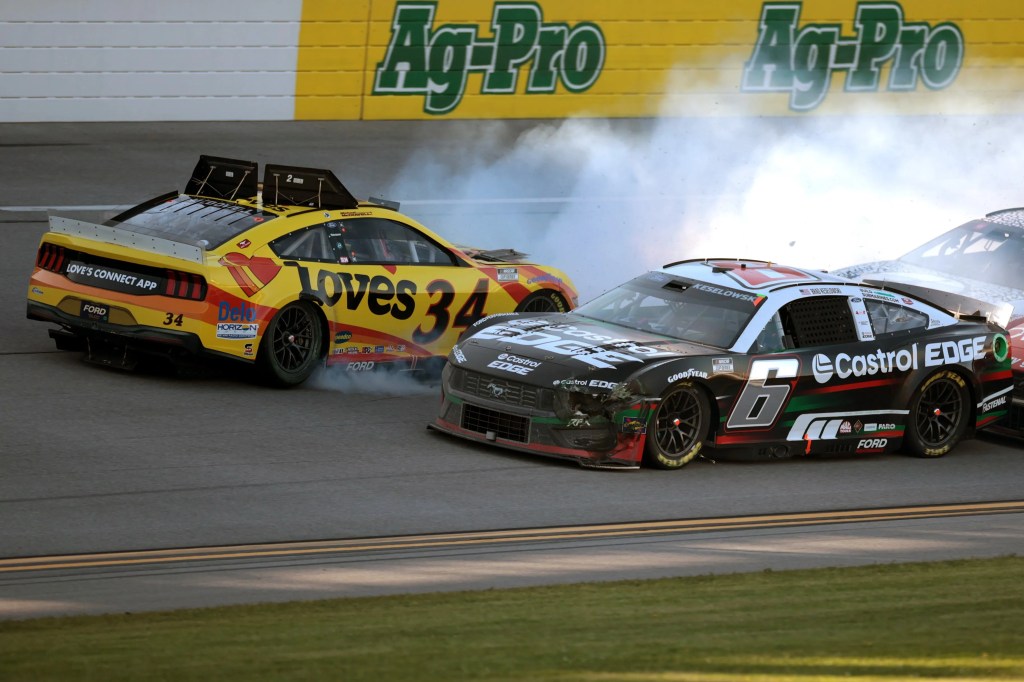
It’s still early in the season but Michael McDowell was racing on the final laps to salvage his entire season.
McDowell has been pretty competitive this season, based purely on speed, but a lot of things have just gone wrong this spring. There have been mechanical gremlins. They have landed on the wrong side of some strategic decisions.
And sure, there’s been a handful of races where Travis Peterson and crew just missed it.
But entering Talladega, and given the superspeedway program at Front Row Motorsports, McDowell could have completely erased a start that left him 23rd in the standings with his decisions behind the steering wheel on Sunday.
If he wins the race, he is back in the playoffs for the second year in a row and the rest of the summer becomes about scoring playoff points. If he doesn’t win, well, they are right back where they started, which is in the no man’s land between not having enough points to challenge for a playoff spot but also only having a handful of races remaining where they can truly challenge for the win.
All of this to say that it’s easy to criticize McDowell for a bad block but that last straightaway might have been his entire season. Sure, you expect them to contend on the remaining road courses and the race at Atlanta, but the reward was right there.
So, when Keselowski darted high, McDowell blocked. He has to win. Thus, when Keselowski made his second move, McDowell blocked again. A big block. But again, he has to win.
But man, that is such a low percentage play and his race was lost the moment Keselowski laid back to Noah Gragson to get the push and run.
“Here’s the reality of it,” McDowell told Sportsnaut after the race. “I made a bad move and crashed the field, and it’s my responsibility to do a better job than that. I need to go back and look at it. It is the last lap at Talladega so you’re going to go for it and I was going for it. I wasn’t trying to be irresponsible. I thought I had room to come down and I didn’t.”
It was still an overall predictable ending as Keselowski has never met a block that he would lift for, and to be fair, he is also trying to end what is now a 108-race winless streak too. Keselowski is also currently around the playoff bubble.
That was just high stakes superspeedway racing.
“I was looking high on Michael and he did a good job blocking,” Keselowski said after securing a runner-up result. “I turned back down and got a good push from Noah, and Michael came back down to block that, and by then we were kind of a freight train coming and Newton’s Cradled into the No. 34 car and (it was) just too much of a hit for him to be able to save.
“So, it’s unfortunate. I thought we had a really strong day. It looked like we were going to get a Ford 1-2-3 and it didn’t work out. I’m glad to get a good finish but really want the win.”
It’s just modern superspeedway racing and Keselowski summed it all up fairly afterwards.
“I don’t know that anybody did anything wrong,” Keselowski said.. “I just still hate that Michael didn’t get the solid day that he deserved, and we didn’t get the win. But that’s how it goes.”
It’s just unfortunate that it had to involve so many other cars, sending Josh Berry up in the air and Corey Lajoie sideways against the wall, but that’s how it goes too.
Hope EJ is okay
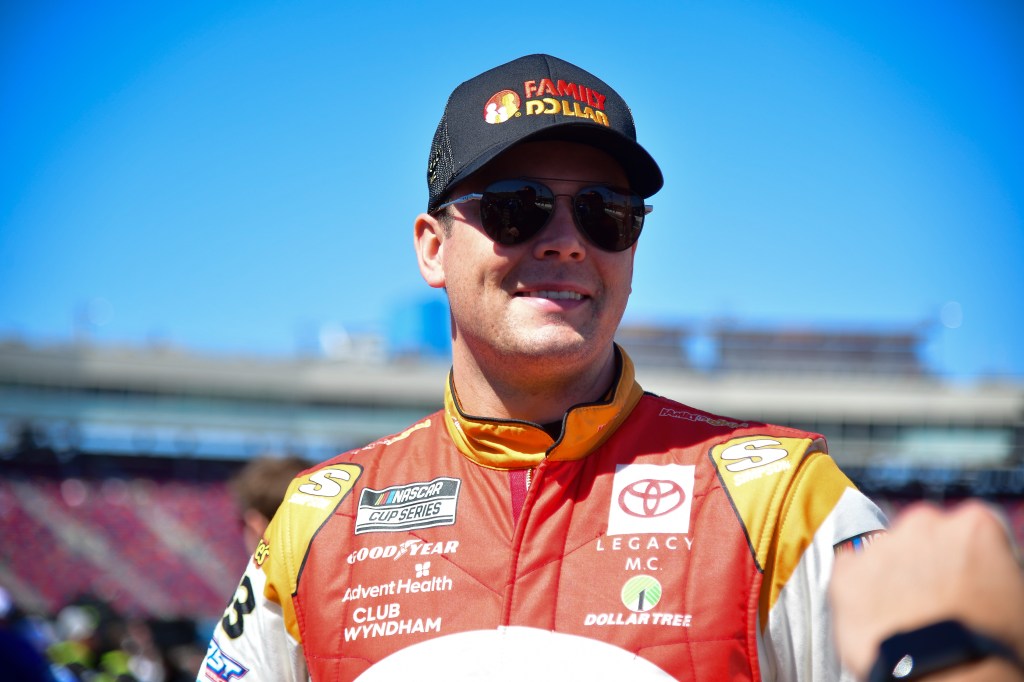
A conversation about ‘how superspeedway racing is’ would be incomplete without also addressing the crash that sent Erik Jones to the University of Alabama Birmingham hospital, one of the absolute best in the country, on Sunday night.
This was also a just how it is kind of crash, but it’s also just a little bit disheartening to come to these tracks and accepting that the likelihood is quite high that at least one driver will leave hurting in some way or fashion.
Ryan Newman
Joey Logano
Ryan Preece
Erik Jones
Again, as Marty Smith said in the narration to NASCAR Full Speed on Netflix, that drivers know this potential outcome and choose to do it anyway is an act of badassery but it doesn’t make it any easier for all of us to digest four times a year.
Listen to Jones’ voice, both during the crash, and afterwards.
It’s actually remarkable that he felt well enough to be cleared from the infield care center and even spoke to reporters afterwards.
Adrenaline is a hell of a drug because he volunteered himself to UAB hospital within an hour of being released.
This isn’t a slight or criticism of NASCAR’s safety protocols but here is to hoping that there are continued lessons to be learned about how Jones was extracted from the car and ultimately released within 10 minutes of being checked into the infield care center.
Without knowing the diagnosis, it just seemed premature, but it’s also a frequent occurrence as injury severity in all sports isn’t known until swelling goes down and energy levels normalize. Ultimately, these are professionals of the highest caliber tending to Jones but there are at least conversations to be had.
Hopefully Jones, who was released from UAB shortly after midnight, will make a speedy recovery and won’t be the worse for wear from what happened.
Credit also has to be given to NASCAR for ultimately making the rule changes to both the front and rear clips on the cars the past two seasons, and also paying for them, because this crash would have been even worse in the first two years of this car.
The front end crushed but that was actually preferable to the energy from the impact not being dissipated whatsoever.
And speaking to the continued lessons that are being learned, NASCAR has taken the Legacy Motor Club No. 43 back to its research and development facility to better understand how Jones was hurt and what changes might be necessary to prevent those in the future.
The futility of it all
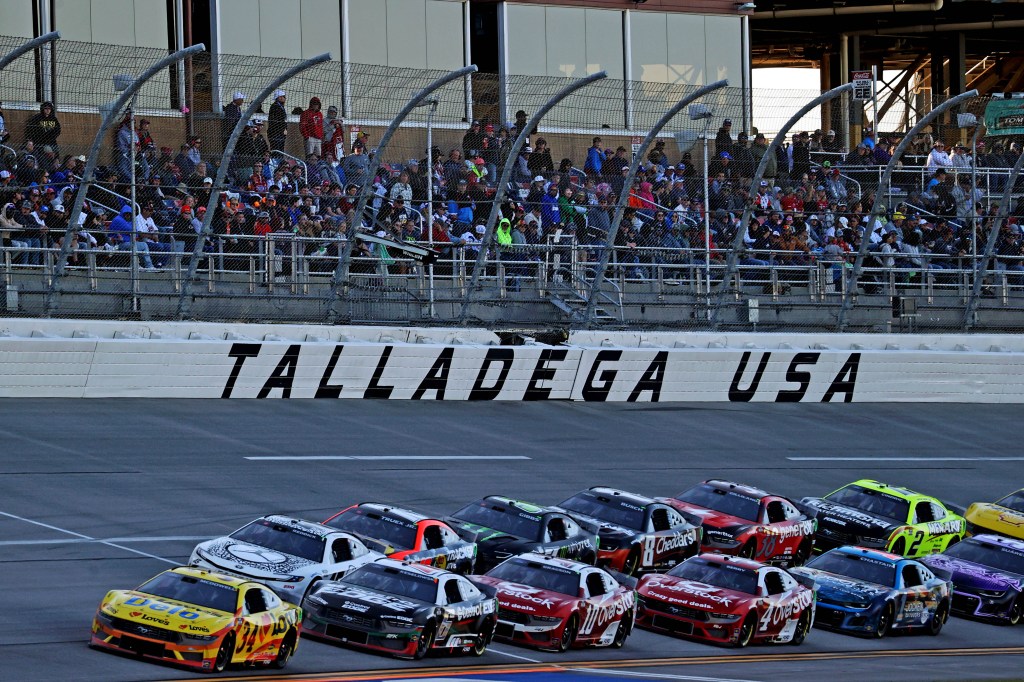
So, lastly, the big pink elephant in the room and what everyone wants most to talk about after the GEICO 500 — the snail’s pace that everyone pretty much ran up until 26 laps to go.
There was an indication this would happen after the Daytona 500 in February but the historic absurdity of it all wasn’t lost on JTG Daugherty No. 47 crew chief Mike Kelley after the race.
“30 years of doing this and never thought we would come to the fastest track on the planet and run five seconds off the pace but these are the cards we have been dealt right now.”
Those cards are the following:
- A playoff point is the most valuable commodity in NASCAR right now and stage points are the second most valuable
- The NextGen car is so draggy that passing on the track is a near impossibility at race speed
- Slowing down tremendously saves fuel and decreases the amount of gas needed during refueling on pit road
- Track position can be gained or lost based on how much time is spent on pit road
“As long as the rules are the same way, we still have to race for points and race for the best finish possible,” Kelley added. “All week, we’ve spent our race prep trying to determine how aggressively we could fuel save and we nearly reached a dangerous point where we almost could have made an entire stage without pitting.
“I don’t know if that’s good or bad but it’s different.”
He says if you polled every team in the garage, some hated Sunday because they want the racing on the track to be the focus but others loved that the running order and the results were a product of their team strategic decisions.
So, on one hand, this dynamic created a lot of three-wide racing, no check that, riding and a ton of lead changes because no one wanted to lead and burn up the most fuel without the positive effects of a slipstream.
On the other hand, as Denny Hamlin put it after crashing out of the race:
“We’re not racing …. And the whole race, no one was racing until the end,” he said of each stage.
Is that inherently the problem though?
If we’ve already concluded that there is nothing more valuable in NASCAR than playoff and stage points, and they were only paid out on Laps 60, 120 and 188, what is the point of risking destroying a race car at any point beyond those three arbitrary markers?
Further, even if Hamlin felt like he and his peers weren’t racing, that doesn’t mean their respective TEAMS were not racing.
They absolutely were.
It doesn’t make for compelling television, but at any point during the race, a fan could have pulled up the NASCAR scanner app and selected any team’s communication and listened to conversations about their respective strategies.
The Toyotas pitted early in the final stage in the efforts of leap frogging the Chevrolet and Ford teams, who opted to max save throughout the stage, so they could spend less time on pit road.
If the Toyotas hadn’t crashed, it would have been interesting to see where those two respective strategies played out. It doesn’t show up well on television, and it’s kind of IndyCar and Formula 1, but that’s competition.
It’s just not traditional NASCAR superspeedway competition.
But, if for those reasons, fans reject it, Stewart Haas Racing No. 4 crew chief Rodney Childers offered the most logical fix to eliminate the extreme fuel conservation witnessed at Talladega on Sunday.
Add a fourth stage.
“We already do that for the Coca-Cola 600 and that works,” he said. “But that will make it to where the (fuel) runs are already played out. I know that’s not what us crew chiefs want, because we like having options, but on the other hand, if the stages were 40 laps instead of 60, there wouldn’t be any fuel saving.
“We’d be hauling butt the whole race.”
That sounds great, right?
Wrong!
In the rare instances where the drivers went full-throttle on Sunday, no one could pass, because this car makes so much drag that pulling out of the slipstream is akin to pulling a dragster parachute that just pulls you back to the rear of the field.
Watch back the finish.
Beyond McDowell, who had control of the race and could jump back and forth to defend both lanes, everyone else was stuck in place. A group of drivers kept trying to form a third line against the wall but that just doesn’t work with this car and hasn’t for three years.
Harrison Burton was part of that group.
“We were trying everything to get up front,” Burton said. “Once it gets wide open, and no one is saving fuel, that third line is dead. If you’re in the back, you’re kind of stuck. Me, Buescher and a few others tried and it didn’t work until the leaders started doing their thing and we just missed the crash.”
So be careful about asking for a fourth stage or even no stages because there are always unintended consequences.
Drivers running at 100 percent full throttle for the entire race will just produce a gridlock that looks like I-77 in Downtown Charlotte on a Tuesday afternoon at rush hour. Everyone wants to go, they’re not, and everyone hopes to miss the big crash.
As is the case with the short track problem, it just comes down to this car and its inability to race on tracks that are not intermediates.
“He’s so right though,” said Hamlin on his podcast on Monday. “And that’s the tough part about it, is that when you look at the final restart, it looks like the last lap. The two cars that controlled the outside line and the inside line were the same cars the entire last thirty laps. Because you cannot afford to get out of line. If you get out of line. It’s over.”
Again, it comes down to the car.
“The NextGen car has a tremendous amount of drag in it,” he added. “That’s basically how far the car can go down the straightaway.
“On top of that, we changed to a common engine cause we wanna save costs… so now we have more horsepower than we’ve ever had on a superspeedway. But we’ve had to put a giant spoiler on the back of the car to slow them down. And we’ve slowed them down even more because cars have flipped over in the last few years, NASCAR wants to limit liability there so they keep slowing the cars down more and more.”
So his suggestion is reducing drag through the spoiler and reducing horsepower to match it but that is going to open up even more cans with even more worms.
And further, all of this figurative milk is being spilled over a racing product that, no matter what gets done to change the first 90 percent always ends the same. There will be cars upside down, on fire, piled on top of each other but maybe in the best-case scenario a side-by-side finish at the same time.
Matt Weaver is a Motorsports Insider for Sportsnaut. Follow him on Twitter.
